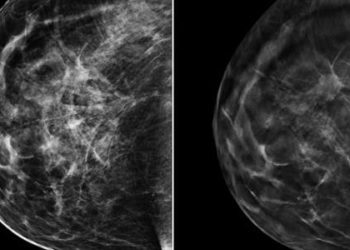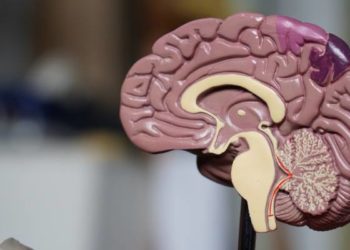2 Minute Medicine Rewind January 24, 2022
1. Patients with atrial fibrillation with acute ischemic stroke were >2 times more likely to suffer symptomatic intracranial hemorrhages following treatment with low-dose IV thrombolysis than patients without atrial fibrillation.
2. Different dosages of IV thrombolysis following acute ischemic stroke were not associated with differences in long-term functional outcomes.
Evidence Level Rating: 1 (Excellent)
Atrial fibrillation (AF) is a common etiology of acute ischemic stroke causing disability. However, there has been a paucity of evidence describing outcomes in atrial fibrillation-related stroke following treatment with different dosages of IV thrombolysis. This multicenter prospective cohort study assessed clinical outcomes following treatment with IV alteplase for ischemic stroke in 2351 patients in China with (n=1371) and without (n=980) atrial fibrillation. The primary outcome was differences in favourable functional outcome (FFO) rates at 90 days and symptomatic intracranial hemorrhages (SICH) after IV thrombolysis (IVT) within 24 to 36 hours between the AF and non-AF groups. Patients in these groups had no significant differences in FFO, functional independence or 90-day mortality rate following adjustment for the THRIVE score. The AF group did have a 2‐fold increased SICH rate than the non‐AF group according to the NINDS standard (RR, 2.41 [95% CI, 1.57–3.71]; P<0.0001; adjusted RR, 2.14 [95% CI, 1.36–3.37]; P=0.0010). Secondary objectives included determination of clinical outcomes using low-dose (0.6 mg/kg-0.8 mg/kg) and standard-dose alteplase (0.9 mg/kg), where there was a >2-fold increased risk of SICH in AF patients receiving low-dose IVT (adjusted RR, 2.81 [95% CI, 1.63-5.04]; P=0.0003) but no difference in 90-day functional outcomes. The results suggest that long-term functional outcomes in acute ischemic stroke patients may not be linked to different dosages of IV alteplase.
1. Preconception intensive weight loss interventions did not increase fertility or birth outcomes in women with obesity compared to exercise-only interventions without targeted weight loss.
Evidence Level Rating: 1 (Excellent)
Weight loss in women with obesity and infertility is believed to increase chances of healthy gestations. However, evidence evaluating weight loss interventions in women with obesity to date has not convincingly demonstrated benefit from this recommendation. The FIT-PLESE trial, a multicenter randomized controlled parallel group, recruited 379 women with BMI ≥30 kg/m2 to two arms, preconception: an intensive weight loss group (caloric restriction, exercise and Orlistat) and a weight maintenance group (exercise alone). All patients had good health and normal reproductive anatomy. In phase two, the patients received infertility treatments: ovarian stimulation with clomiphene citrate combined with intrauterine insemination. The primary outcome was a healthy birth outcome, while secondary outcomes included live birth, time to pregnancy, pregnancy loss rate, multiple pregnancy rate, and pregnancy complication rate. A significantly greater proportion achieved a 5% and 10% weight loss in the intensive group than in the standard group (P<0.001). Results demonstrated significant improvements in multiple metabolic and reproductive parameters for the intensive weight loss group. Overall, there was no significant difference in rates of live births, time to pregnancy, or multiple pregnancies between the intensive weight loss and weight maintenance groups.
1. Early HIV testing and initiation of antiretroviral therapy (TasP) significantly reduced viral loads in patients living with HIV.
Evidence Level Rating: 2 (Good)
Antiretroviral treatment (ART) in HIV greatly reduces the incidence, morbidity and mortality of HIV cases. UNAIDS has proposed the 90-90-90 target for HIV treatment as prevention (TasP): the strategy of increasing HIV testing with immediate initiation of ART to diagnose, treat and virologically suppress HIV in 90% of individuals affected by it. This retrospective population-based cohort study was designed to assess the population-level impact of TaSP intervention in BC, Canada in 3301 adults with HIV. Outcomes were time from diagnosis to ART initiation and from ART initiation to first virologic suppression. Results showed that the TaSP initiative was associated with 64% shorter time from diagnosis to treatment (adjusted mean ratio 0.36, 95% CI 0.34-0.39) and a 21% shorter time from treatment to suppression (adjusted mean ratio 0.79, 95% CI 0.73-0.85). These results have strong implications for the implementation of TaSP on a global scale to reduce HIV/AIDS disease burden.
1. Treatment with alectinib reduced CNS lesion sizes and significantly improved symptoms, ECOG performance scores and requirements for mannitol and corticosteroids in patients with metastases from non-small cell lung cancer.
Evidence Level Rating: 2 (Good)
Central nervous system metastases are highly prevalent in patients with ALK gene mutations driving advanced non-small cell lung cancer despite existing treatments with ALK-targeted tyrosine kinase inhibitors (TKIs). Alectinib is a second-generation ALK-TKI with very high blood-brain barrier penetration rates and has demonstrated efficacy in patients with CNS metastases. Data has been limited, however, in patients who are symptomatic or unstable from their disease. This multicenter retrospective analysis included 65 patients with brain metastases (BM) or leptomeningeal metastases (LM) undergoing alectinib treatment, subgrouped into 3 cohorts. Cohort 1 (n=20) was comprised of ALK-TKI-naive patients, cohort 2 (n=32) included patients with intracranial progression ± extracranial progression after treatment with crizotinib, and cohort 3 (n=13) included patients with CNS-limited disease following treatment with other second-generation ALK-TKIs (ceritinib, CT707, WX-0593). Of these patients, most had uncontrolled CNS metastases before treatment with alectinib (cohort 1: n=19, cohort 2: n= 30, cohort 3: n=12). Overall objective response rates (o-ORR), overall disease control rates and tumor shrinkage rates in CNS target lesions were recorded. For the overall population and patients with uncontrolled CNS metastases, similar intracranial response in CNS target lesions was observed: cohort 1: 81.8% and 80%; cohort 2: 76.5% and 86.7%; cohort 3: 42.8% and 33.3%. Significant improvement in CNS-related symptoms was noted in 75% (6/8), 78.6% (11/14), and 83.3% (5/6), respectively, in these cohorts. A significant decrease in the number of patients requiring mannitol or corticosteroids was found following treatment with alectinib (P<0.001), in addition to a steep decline in the number of patients with ECOG score ≥2 points before and after the administration of alectinib (P=0.003). Overall, alectininb may be effective in reducing lesion and symptom burden in non-small cell lung cancer patients with CNS metastases, but further investigation with larger sample sizes is necessary.
1. Shapiro criteria and qSOFA scores significantly predicted sepsis-related mortality in bacteremic patients.
2. Model performance measures did not strongly support the independent use of sepsis criteria to screen for bacteremia in emergency departments.
Evidence Level Rating: 2 (Good)
While bacteremia associated with sepsis is associated with high mortality rates, prompt identification of sepsis and initiation of antimicrobials has essential survival benefits. Several sepsis scores have been defined, including SIRS, qSOFA, CEC SEPSIS KILLS and Shapiro criteria with varying performance measures (e.g., sensitivity and specificity). A retrospective age-matched cohort study included 502 adult ED patients with true positive or negative blood cultures. The primary outcome was to determine the sensitivity and specificity of these sepsis criteria within the cohort, compared to age-matched non-bacteremic individuals. The modified Shapiro criteria had the highest sensitivity (88%) and modest specificity (37.85%) while qSOFA had the highest specificity (83.67%) and poor sensitivity (19.82%). CEC SEPSIS pathway sensitivity was 70.1% with specificity of 71.1%, and SEPSIS KILLS was activated on only 14% of bacteremic patients. Proportionately more patients who later died of sepsis-related mortality were identified by the Shapiro criteria (OR 0.23 [95% CI 0.05 ≤ OR ≤ 0.98]; p = 0.03) and qSOFA score (OR 0.36 [95%CI 0.14 ≤ OR ≤ 0.94]; p=0.03). Overall, results suggest that individual sepsis scores should not be used as stand-alone tools when evaluating patients in emergency departments for bacteremia. Potential confounds were differing comorbidities in age-matched patients and the transient potential in bacteremia for false negative blood culture results. Future research is required.
Image: PD
©2022 2 Minute Medicine, Inc. All rights reserved. No works may be reproduced without expressed written consent from 2 Minute Medicine, Inc. Inquire about licensing here. No article should be construed as medical advice and is not intended as such by the authors or by 2 Minute Medicine, Inc.







![Metformin treats Fragile X syndrome symptoms in mice [PreClinical]](https://www.2minutemedicine.com/wp-content/uploads/2017/07/Metformin_500mg_Tablets-75x75.jpg)